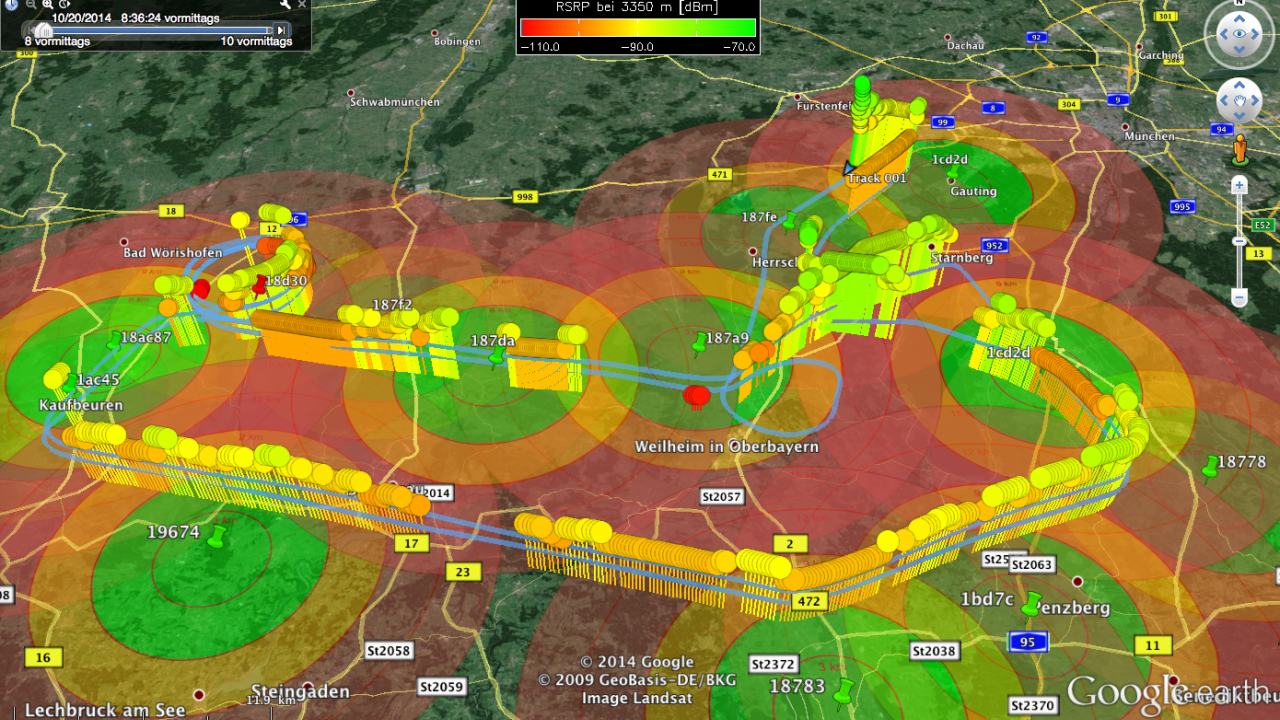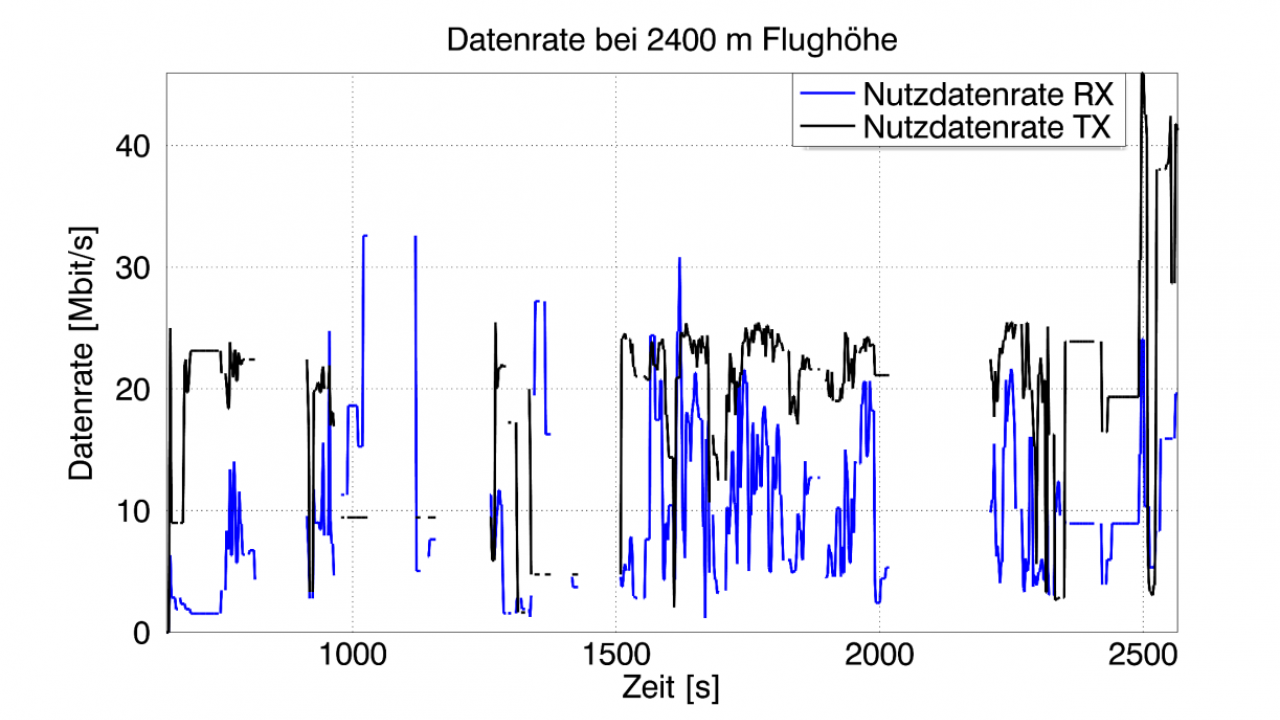So far, in the VABENE++ project data gets transmitted from the aircraft/helicopter to the ground via a special microwave link or an optical laser link. However, for these data links a special mobile ground station needs to be set up in the field. Now a study was carried out to investigate whether the modern mobile communication standard “Long Term Evolution” (LTE) can be used as an alternative or supplementary data transfer technique. For data reception on the ground only the already available LTE ground station infrastructure of the cellphone providers was considered.
For the assessment a conventional off-the-shelf FRITZ!Box LTE modem without external antennas was installed in the DLR research aircraft DO 228-212. During the flight the LTE performance parameters (e.g., link quality, data transfer rate, etc. ) were measured and recorded continuously. Several radar images of hundreds of megabytes size were successfully transferred to the ground and stored on a webserver. The measuring flight was carried out in altitudes between 2000 and 3000 m above ground, the typical operation altitudes of the current F-SAR and the future V-SAR airborne radar system. Over wide areas a stable LTE connection was available with data rates between 5 and 20 Mbit/s (cf. figures). It is assumed that the existing reception gaps can be minimized with omnidirectional antennas outside the aircraft fuselage. Furthermore, the expansion of the LTE infrastructure will lead to more ground stations and therefore a better signal coverage in the future.
As a result of the study data transmission via LTE proved to be a suitable and comparatively cheap alternative and supplement to the previously used microwave and laser links for radar-based traffic monitoring.


